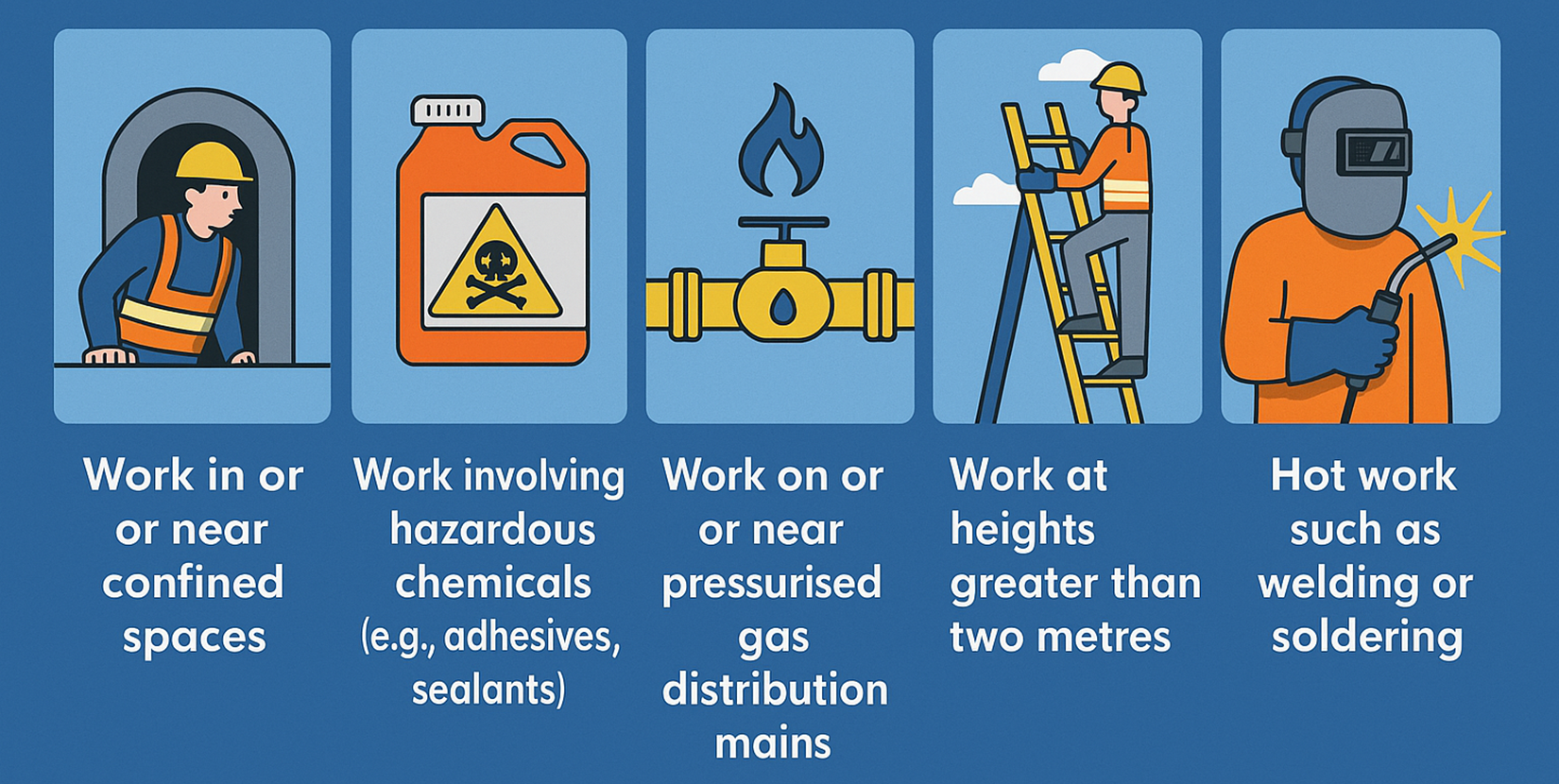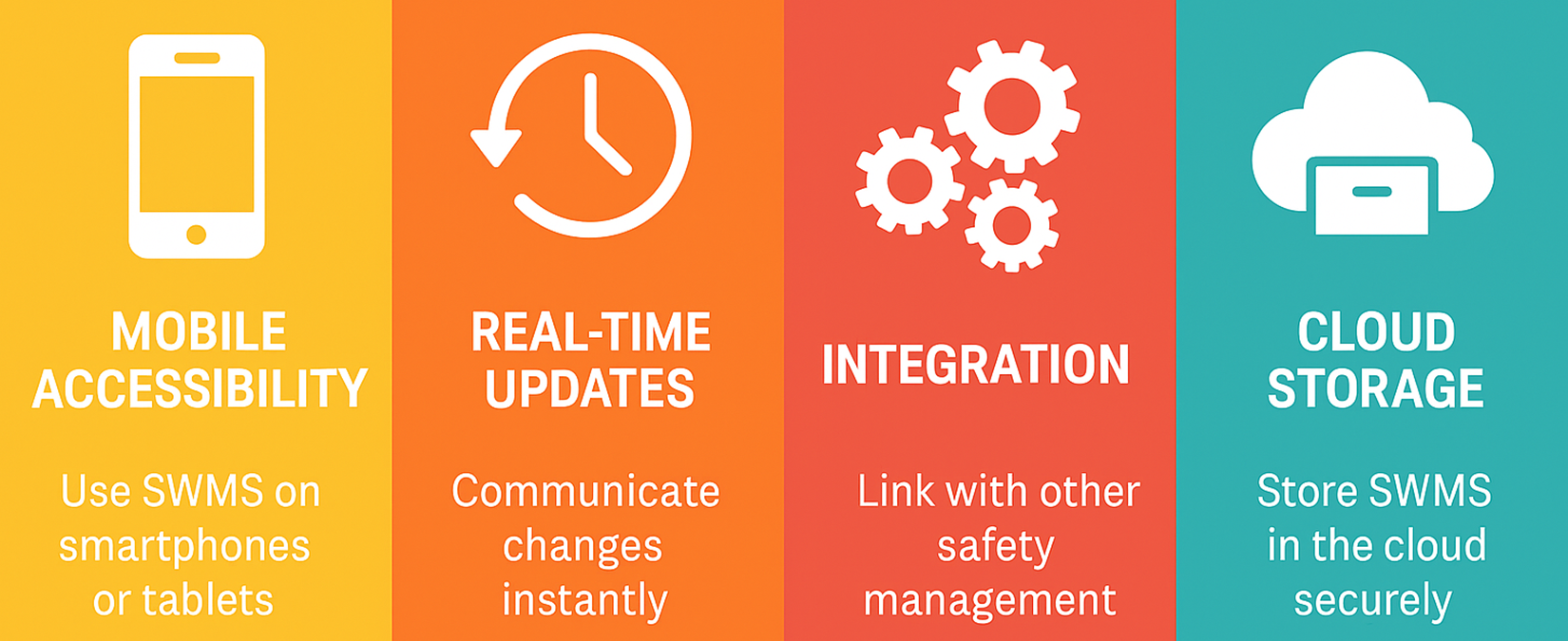Plumbing SWMS: Enhancing Safety and Compliance in Plumbing Work
Building safer futures by implementing a plumbing SWMS that safeguards every worker.
Plumbing is an essential trade that underpins the functionality, hygiene, and safety of buildings and infrastructure. From water supply and drainage systems to gas fitting and roofing, plumbers play a critical role in both residential and commercial projects. While the work is indispensable, it also involves significant risks such as confined spaces, hazardous substances, hot work, and working at heights.
To ensure these risks are managed effectively, Australian workplace safety laws require Safe Work Method Statements (SWMS) for high-risk construction activities. A plumbing SWMS provides a structured, detailed process for identifying hazards, assessing risks, and implementing control measures to safeguard workers, contractors, and the public.
This article explores why SWMS are critical in plumbing, what should be included in one, the legal framework that governs them, industry best practices, and how digital tools are transforming the way plumbers manage safety.
What are SWMS?
A Safe Work Method Statement (SWMS) is a document that outlines:

- The high-risk work activities being undertaken.
- The potential hazards associated with those activities.
- The control measures required to manage the risks.
- The responsibilities of workers and supervisors.
In Australia, SWMS are mandated under the Work Health and Safety (WHS) Regulations for 18 categories of high-risk construction work.
Many plumbing tasks fall within these categories, including:

Because of these risks, a tailored plumbing SWMS is a critical safety document on construction sites.
Why SWMS are Important in Plumbing

Legal Compliance
Without a SWMS, employers and contractors are exposed to legal penalties, site shutdowns, and reputational damage. Compliance demonstrates a commitment to meeting regulatory obligations.
Risk Reduction
Plumbing involves tasks such as cutting into pipes, handling gas lines, and working in trenches. A SWMS ensures hazards are systematically identified and mitigated.
Worker Engagement
A SWMS provides a communication tool for supervisors to brief workers, ensuring everyone understands safe work practices before starting tasks.
Accountability
Clearly documented responsibilities and procedures hold workers and supervisors accountable for following agreed safety protocols.
Building a Safety Culture
Consistent use of SWMS promotes a workplace culture where safety is embedded in everyday activities.
Hazards Specific to Plumbing
Plumbing involves a diverse range of tasks, each with distinct hazards:

- Confined Spaces: Risk of suffocation, toxic atmospheres, and limited escape routes.
- Manual Handling: Lifting heavy pipes and equipment can lead to musculoskeletal injuries.
- Hot Work: Burns, fires, and explosions during soldering or welding.
- Chemical Exposure: Contact with adhesives, sealants, or cleaning chemicals can cause skin or respiratory issues.
- Falls from Heights: Roofing work, ladders, or elevated platforms.
- Noise and Vibration: Use of cutting tools and machinery can damage hearing and cause long term conditions.
- Electrical Hazards: Proximity to wiring during installations or repairs.
- Trenching and Excavation: Risk of cave-ins or collapse when laying underground pipes.
What to Include in a Plumbing SWMS
A comprehensive SWMS should contain:

- Scope of Work
- Detailed description of plumbing tasks being performed.
- Hazard Identification
- A full list of hazards relevant to the specific job site.
- Risk Assessment
- Evaluation of likelihood and consequence for each hazard.
- Roles and Responsibilities
- Allocation of duties to supervisors, safety officers, and workers.
- Emergency Procedures
- Actions to take in case of gas leaks, chemical spills, or trench collapses.
- Review Process
- Procedures for revising the SWMS when conditions change or after incidents.
Best Practices for Developing SWMS

- Involve Workers: Engage plumbers who perform the tasks daily for practical insights.
- Keep It Clear: Use plain language and avoid technical jargon.
- Use Visuals: Flowcharts, diagrams, and tables improve clarity.
- Make It Accessible: Ensure the SWMS is available on site for workers and inspectors.
- Review Regularly: Update SWMS when hazards or methods change.
Legal Framework in Australia
The WHS Act 2011 and WHS Regulations require PCBUs (Persons Conducting a Business or Undertaking) to prepare SWMS for high-risk construction work. Specific obligations include:
- Preparing the SWMS before work starts.
- Ensuring the SWMS is followed during work.
- Keeping the SWMS accessible at the workplace.
- Reviewing and revising the SWMS when necessary.
In Victoria, while the Occupational Health and Safety Act 2004 differs slightly, similar requirements apply under WorkSafe Victoria’s guidelines.
Technology and Digital SWMS
Digital solutions are increasingly being used by plumbing companies to streamline SWMS management.
Benefits include:

These tools reduce administrative burden while improving compliance and worker engagement.
Common Mistakes in SWMS

Case Study: Gas Fitting Project in Queensland
A plumbing contractor in Queensland was engaged for a gas fitting project in a commercial building. Initially, their SWMS did not adequately address confined space risks during pipe installation. Following a review, they developed a more detailed plumbing SWMS that included:
- Atmospheric testing before entering confined areas.
- Continuous monitoring of oxygen levels.
- Standby personnel with rescue equipment.
- Mandatory use of intrinsically safe lighting and tools.
The revised SWMS was tested during a drill and later during actual work, where workers reported feeling safer and more confident. No incidents occurred, and the contractor was commended during a safety audit.
Continuous Improvement in Plumbing Safety
Safety is not static.
Organisations should continuously improve by:

Conclusion
Plumbing is a critical trade with inherent risks that must be carefully managed. A Safe Work Method Statement provides a structured, legally compliant, and practical framework for identifying hazards, implementing controls, and protecting workers.
For businesses, a robust plumbing SWMS is more than just a compliance document. It is a vital communication and accountability tool that strengthens safety culture, reduces incidents, and ensures projects are delivered smoothly.
By engaging workers, tailoring documents to specific tasks, and embracing digital solutions, plumbing contractors can transform their SWMS into living, effective systems that safeguard lives and support business success. In today’s regulatory environment, adopting a detailed plumbing SWMS is not optional, it is essential for compliance, efficiency, and reputation in the plumbing industry.
Related Content
Join Our Newsletter
Receive expert insights, safety updates, and the latest updates in our services and apps. Stay ahead of workplace safety, compliance, and operational efficiency delivered straight to your inbox.

.png)
.png)
.png)
.png)
.png)
.png)
.png)
.png)
.png)
.png)